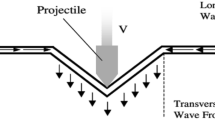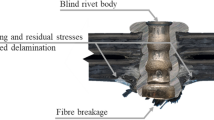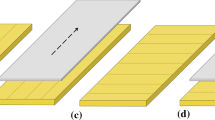Abstract
The load bearing characteristics of heat-treated rubberwood furniture components and joints were studied. It was found that heat-treated samples had significantly lower fatigue strength compared to the conventionally kiln-dried rubberwood samples, which were used as control specimens. Inevitably, the recommended allowable design stresses for heat-treated rubberwood furniture components and joints could be set at 40 and 25 % of the respective bending strengths, in order to ensure its compliance with furniture performance standards. These figures are much lower than the allowable design stresses for conventionally kiln dried components, reflecting the need for a lower safety margin when working with heat-treated materials.
Similar content being viewed by others
References
Bodig J, Jayne BA (1993) Mechanics of wood and wood composites. Krieger, New York
Dilik T, Hiziroglu S (2012) Bonding strength of heat treated eastern red Cedar wood. Mater Des 42:317–320
Eckelman CA (1999) Performance testing of chairs. Holz Roh Werkst 57:227–234
Eckelman CA, Haviarova E, Zui H, Gibson H (2001) Consideration in the design and development of school furniture for developing regions based on local resources. For Prod J 51(6):56–63
Gündüz G, Korkut S, Korkut DS (2008) The effects of heat treatment on physical and mechanical properties and surface roughness of Camiyani Black Pine wood. Bioresour Technol 99:2275–2280
Ratnasingam, J (2010) Suitability of heat treatment for rubberwood (Hevea brasiliensis) IFRG Report No. 12, Kuala Lumpur
Ratnasingam J, Ioras F (2011a) Fatigue strength and design stress of oil palm wood for furniture application. Eur J Wood Prod 69:507–509
Ratnasingam J, Ioras F (2011b) Bending and fatigue strength of mortise and tenon furniture joints made from oil palm lumber. Eur J Wood Prod 69:677–679
Ratnasingam J, Perkins M, Reid H (1997) Fatigue: its relevance to furniture. Holz Roh Werkst 55:297–300
Yildiz S, Gezer ED, Yildiz UC (2006) Mechanical and chemical behavior of Spruce wood modified by heat. Build Environ 41(12):1762–1766
Author information
Authors and Affiliations
Corresponding author
Rights and permissions
About this article
Cite this article
Ratnasingam, J., Ioras, F. Load-bearing characteristics of heat-treated rubberwood furniture components and joints. Eur. J. Wood Prod. 71, 287–289 (2013). https://doi.org/10.1007/s00107-013-0662-y
Received:
Published:
Issue Date:
DOI: https://doi.org/10.1007/s00107-013-0662-y




